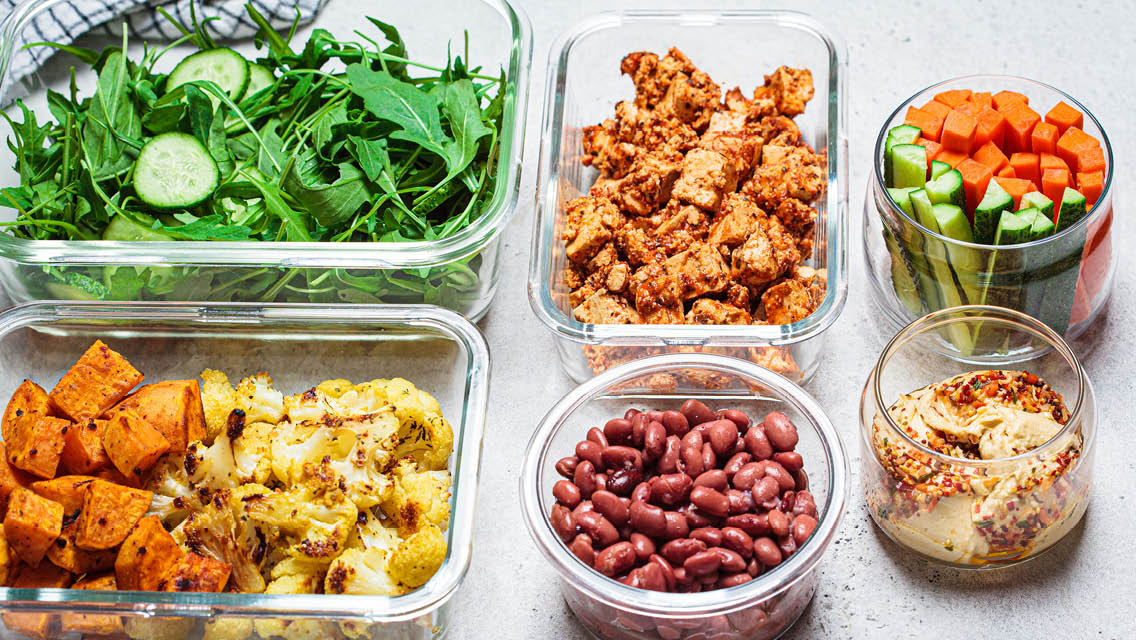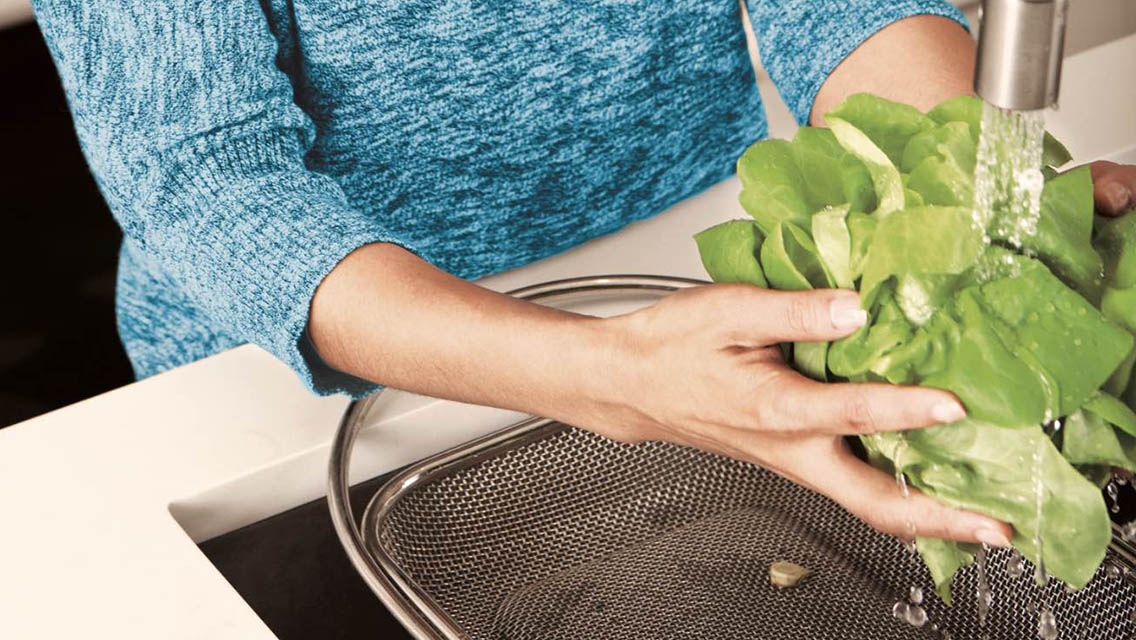Spend a little time planning and a little time prepping, and your mealtimes may just get a little easier throughout the week. Even better, this forethought will help you make fewer trips to the grocery store and support your healthy-eating goals.
To help you feel empowered, we’ve gathered our favorite tips and advice — plus step-by-step instructions — for how to create a customized meal plan for your family that sticks.
Step 1: Take a look at your week.
Start by looking at your family’s schedule for the week. Ask yourself the following questions to help you figure out what’s realistic. You shouldn’t feel the pressure to cook every night.
- What day is best for me to grocery shop?
- What day is realistic to prepare food or ingredients?
- What days — and mealtimes — do I have time to cook?
- When do I need to have on hand for quick meal options?
- What days do I want to order takeout?
Step 2: Plan your meals and grocery list, and go shopping.
Consider the recipes you already know your family loves and pick two to three to make that week. Then, be willing to try a new recipe or two to try. When you find one you enjoy, you can add it into your regular rotation. (You can find healthy-eating recipes here.)
Try following these tips when deciding what to cook and when:
- Choose recipes with a few overlapping ingredients, such as the same meat, veggies, or sauce. That means there are fewer ingredients to buy and less food to prep.
- Take inventory of what’s in your kitchen and choose meals that you already have the ingredients to make.
- Theme your days so you don’t have to think as hard about what to cook each week. Who doesn’t love Taco Tuesday?
Once your meals planned, write all the needed ingredients on a list and hit the grocery store.
Step 3: Start prepping.
Once your purchases are stored in your pantry and refrigerator, take a look back at your meal plan. What can you prep ahead in an effort to save time during the week?
It may be helpful to think about your ingredients by category:
- Meat: If you’re eating the same type of meat for multiple meals, try cooking it all at once. You’ll save a lot of time by preparing it in advance and, according to the Food and Drug Administration, most cooked meat stored in the fridge is good for three to four days.
- Vegetables and fruits: Wash, chop, and store or cook them ahead of time. Then, you can just grab them when you’re ready to use or reheat them.
- Grains and beans: These can add a lot of time to your meal prep if you’re cooking brown rice, quinoa, dry beans, or other similar items. Prep these ingredients ahead of time and store them for easy grabbing when it’s time to add them to your meals.
- Sauces and spices: Mix up homemade sauces, dressings, or spice blends ahead of time.
Step 4: Have a backup plan ready to go.
No matter how well you prepare, sometimes it’s hard to stick to your plan. Whether you’re tired from the day or you’re not feeling well, keep a few healthy options on hand for last-minute meals.
- Keep a few ready-to-heat meals in the freezer. It can be one or two of your family’s favorites that you either make separately when the time allows or double a recipe you’re cooking one night and freeze the extra portions.
- Stock up on healthier staples, such as organic canned soup or frozen veggies you can steam and top with butter or olive oil as a side dish.
- Buy a rotisserie chicken or two, plus a few bagged salad kits, for last-minute meals. These are easy to warm up and toss together, respectively, and can help you avoid an extra takeout meal or two. If you know you’ll be tired coming back from the store, cleaning your grocery items, and prepping your ingredients, this combo meal is also a great option after a busy day in the kitchen.
- Have a list of a few healthier takeout options in mind for the evenings you’d like to take the night off from cooking.




